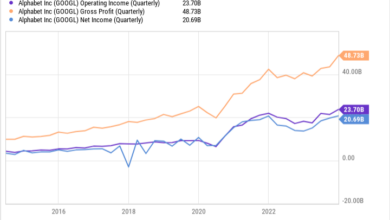The sky-high cost of food is eating up our paychecks at a near-historic rate


Being the very hungry caterpillar is a far more expensive feat these days. Food, well regarded as a basic necessity to live and thrive, is increasingly eating up Americans’ paychecks. Eating-in and going out has become more of a luxury, as the price of groceries and food itself reaches new heights.
Households haven’t spent this much on food since 1991, according to analysis from the Wall Street Journal. Most recent data from the U.S. Agriculture Department shows that 11.3% of consumers’ disposable income was spent on food as of 2022. It’s a record-breaking high since households last felt the burn of inflation while spending 11.4% of their income on food in the early ‘90s.
Even as inflation ebbs, food seems to be the final frontier the consumers must traverse as weekly trips to the grocery store weigh more on peoples’ wallets. Throughout the past year, everything from eggs to a bottle of sriracha surged in price as supply shortages turned common-place items into hot commodities.
Simply a bag of Lays feels like it’s chipping away a greater chunk of our savings. And some are pointing at corporations as the culprits for such early pandemic-era prices sticking around years later. One high-profile critic is President Biden, who recently blamed what companies as the reason for such inflated food prices sticking around.
Consumers are tightening their belts when it comes to battling what they deem “greedflation” or “shrinkflation,” as they search for non-name brand deals. “We’re beginning to see the consumer no longer willing to take the higher pricing,” Samuel Rines, managing director at Corbu, told the Associated Press. “So companies were beginning to get a little bit more skeptical of their ability to just have price be the driver of their revenues. They had to have those volumes come back, and the consumer wasn’t reacting in a way that they were pleased with,” he added.
Others suggest these high food prices are not just about corporate executives pushing the limits because they can. Stores are trying to respond to costs like increasing mortgages, wages, and utilities, according to Tyler Renaghan, the VP of grocery at retail app Upside.
Whether the pushing the envelope regarding the cost of food is on purpose or not, customers are feeling understandably prickled. McDonald’s recently came out of a weaker quarter than expected, in part likely due to pro-Palestine boycotts and also the waning affordability of the chain. “I think what you’re going to see as you head into 2024 is probably more attention to what I would describe as affordability,” CEO Chris Kempczinski said in an earnings call in response to the dip in sales.
And restaurants, too, have become more of an expense for Americans. In one year, prices at restaurants went up by 5.1%, according to the Journal’s assessment of federal data. Indeed, even going for a drink is losing favor with especially younger Americans that are struggling to justify the inflated cost of partaking in the restaurant or bar economy. A new culture has emerged after the pandemic first hit, in part due to pricing and also a more introverted type of behavior. But whether you’re eating in, taking out, or cooking, the cost of food is biting.
Source link




